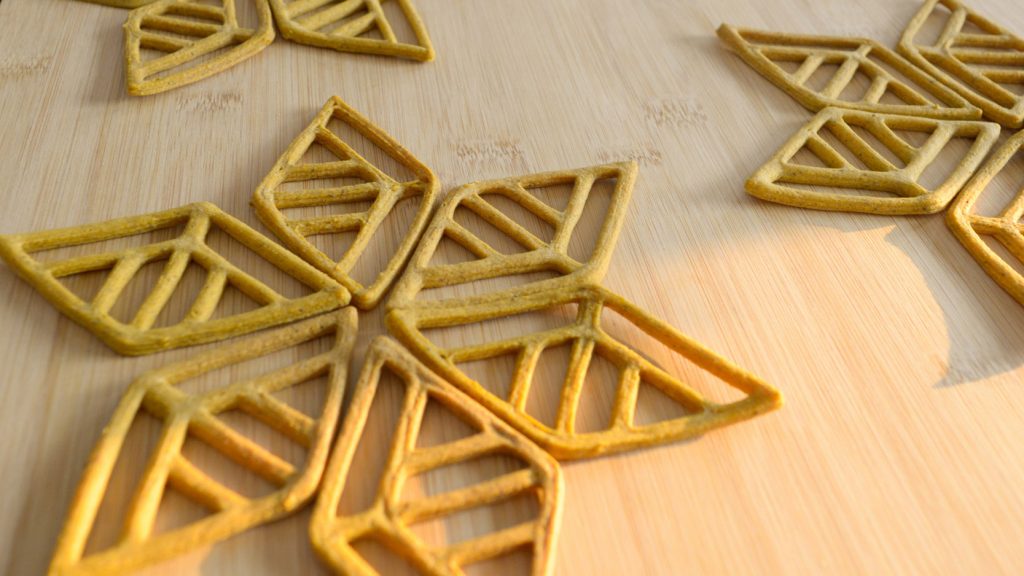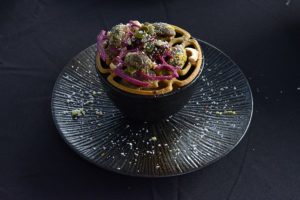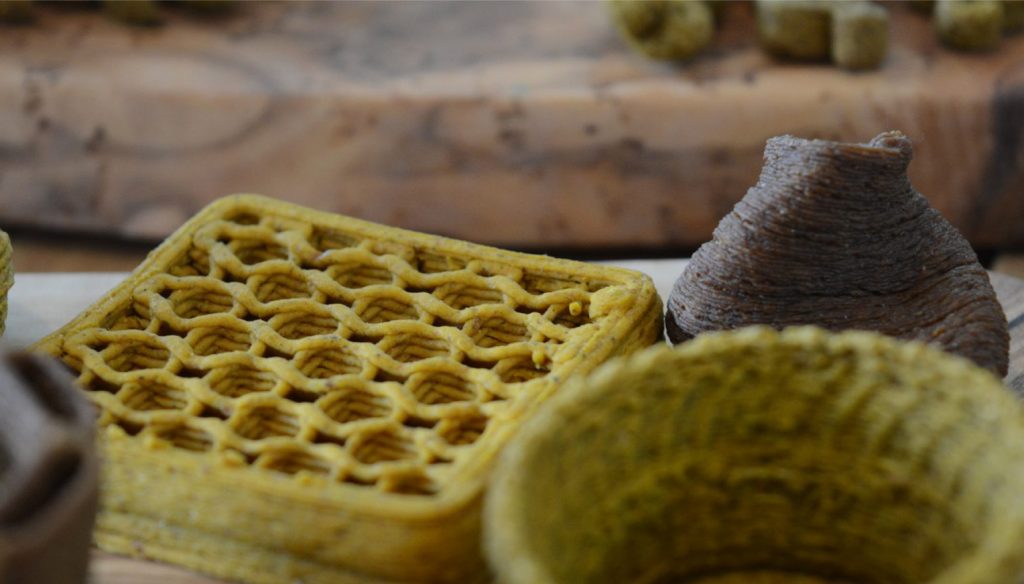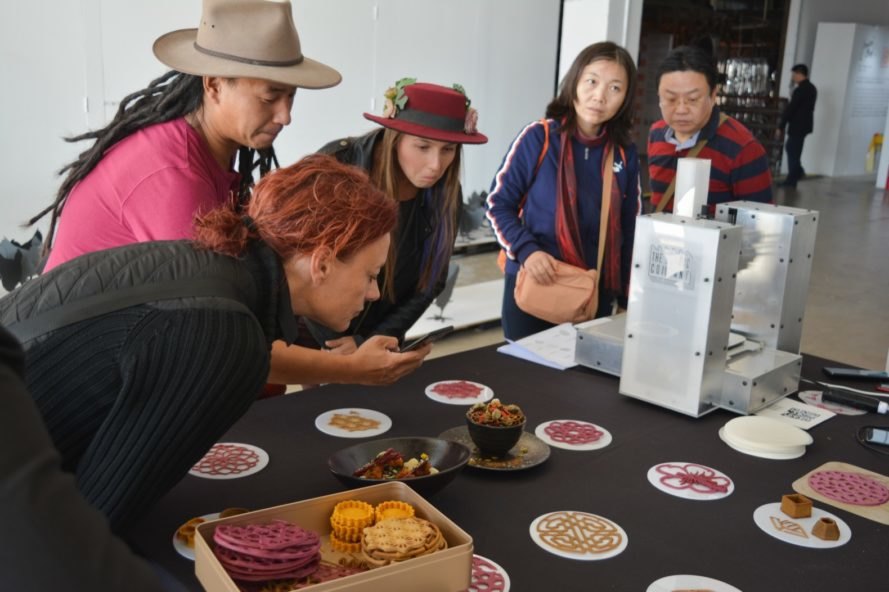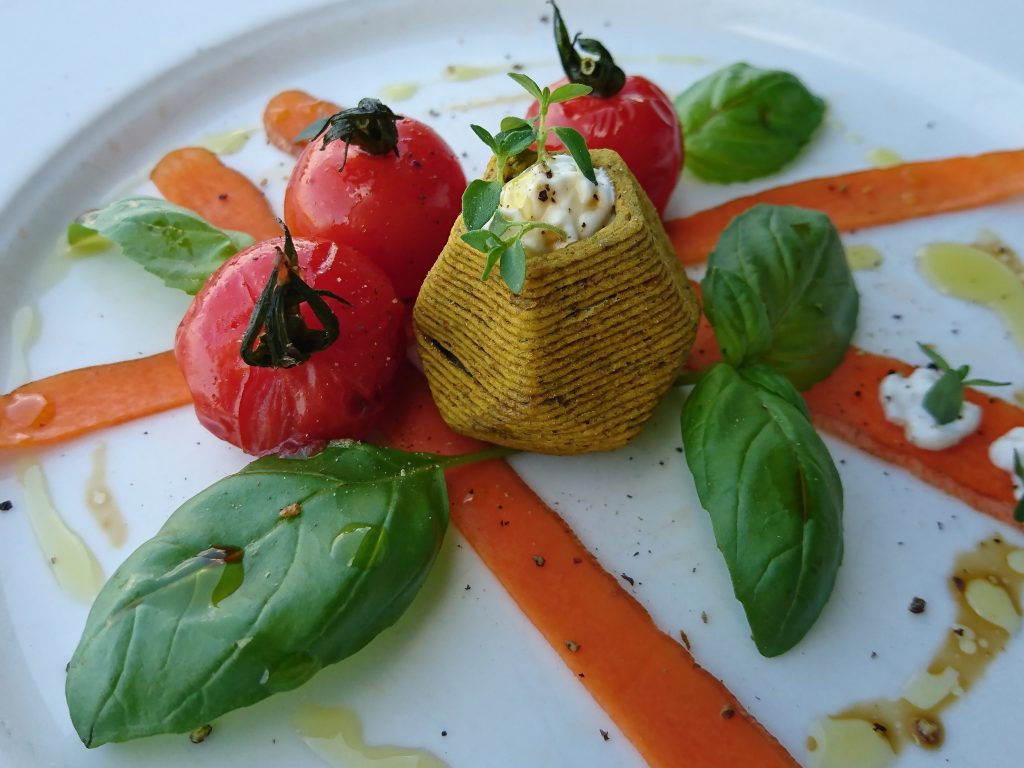 Food losses occur during industrial processing, distribution, and consumption, which is the reason why it is becoming a huge economic, social, and environmental concern for consumers, scientists, and activists for the last couple of years. According to FAO (Food and Agriculture Organization of the United Nations), food waste globally ammounts to one-third of the total food produced for human consumption, which is about 1.6 billion tons a year. 3D printing, apart from being used for prototypes, manufacturing, fashion, architecture, medicine, and many other industries, can also be used for making food. 3D printing can not only use recycled filaments of all sorts of materials; it can also be made from food leftovers!
Food losses occur during industrial processing, distribution, and consumption, which is the reason why it is becoming a huge economic, social, and environmental concern for consumers, scientists, and activists for the last couple of years. According to FAO (Food and Agriculture Organization of the United Nations), food waste globally ammounts to one-third of the total food produced for human consumption, which is about 1.6 billion tons a year. 3D printing, apart from being used for prototypes, manufacturing, fashion, architecture, medicine, and many other industries, can also be used for making food. 3D printing can not only use recycled filaments of all sorts of materials; it can also be made from food leftovers!
 As well as the startup Genecis in Canada, and Oceanz and Cooperative DOOR in Netherlands, this innovative method has caught a Dutch student’s attention. Elzelinde van Doleweerd is an Industrial Design student at the Eindhoven University of Technology who is passionate about cooking and food design. As a designer, Elzelinde believes that she is good at form-giving and aims for perfection. For her, the designing process starts with creation, exploration of different materials properties, new ideas, and feedback. Whenever Elzelinde is in the kitchen preparing food, she expresses her creativity by experimenting with flavors and plating food in the most beautiful and perfect way.
As well as the startup Genecis in Canada, and Oceanz and Cooperative DOOR in Netherlands, this innovative method has caught a Dutch student’s attention. Elzelinde van Doleweerd is an Industrial Design student at the Eindhoven University of Technology who is passionate about cooking and food design. As a designer, Elzelinde believes that she is good at form-giving and aims for perfection. For her, the designing process starts with creation, exploration of different materials properties, new ideas, and feedback. Whenever Elzelinde is in the kitchen preparing food, she expresses her creativity by experimenting with flavors and plating food in the most beautiful and perfect way.
After following the minor Food Technology at the Wageningen University and Research, Elzelinde learned more about food’s material properties and the way it is produced. Once back at Eindhoven, she started working in a restaurant as to develop her skills in the kitchen and start a food design project of her own. For Elzelinde, sustainability is an important aspect in her design process: she likes to reuse and adjust materials to give them new value and give them the chance to be interesting once again.
Although Elzelinde loves to explore new production technologies, creating tasty dishes and new food products, she is very interested in if food design can mean something for our society. In order to combat food wastage, during her Industrial Design degree, Elzelinde started a new project with foods that are commonly wasted in the Netherlands, which she calls “Upprinting Food”. These foods include bread, fruits, and vegetables. Elzelinde has now teamed up with 3D Food Company, a technology company based in China, as a continuation of her project, to produce 3D printed food from leftovers.
To Elzelinde, in China people eat lots of rice, but there is also a lot of boiled rice that is wasted. This issue helped her come up with the idea of a printable food paste made with rice. To do so, Elzelinde boils the vegetables and fruit peels, dries the bread or uses the boiled rice. Once the ingredients are mashed, mixed, ground and sieved, the paste becomes smooth and can then be printed and baked. It is important that the paste is totally dehydrated and that no water remains in the food so it could be safe to eat and saved for a very long period of time. The resulting food has a crunchy texture that, according to Elzelinde, it makes them taste like “cookies” or “crackers”. This is because Elzelinde uses more than a 75% of residual food flows, with the addition of ingredients and spices for flavoring that smooths the paste.
Elzelinde is aiming to produce vegan samples by removing butter and egg. This is a huge challenge for her since these two ingredients are currently used to give the paste its smoothness and crunchiness. In the meantime, she is experimenting with herbs, vegetables, and fruits so as to create new flavors.
On October 2018, Elzelinde had the opportunity to present her recipes for Beijing Design Week, for which she developed two 3D-printed sustainable food concepts. Other participations and projects can be seen on her “Upprinting Food” website.
There is no doubt that 3D printing has impacted on many industries. The additive manufacturing not only gives everyone the opportunity to get creative, but also to solve one of the world’s biggest issues, which is food waste. Restaurants are starting to add 3D printed food to their menus, and although 3D printers still need to improve their production time, this is already promising and innovative.
[Sources & Images: Deezen, Dutch Review, Inhabitat, Upprinting Food, Conserve Energy Future]Subscribe to Our Email Newsletter
Stay up-to-date on all the latest news from the 3D printing industry and receive information and offers from third party vendors.
You May Also Like
Profiling a Construction 3D Printing Pioneer: US Army Corps of Engineers’ Megan Kreiger
The world of construction 3D printing is still so new that the true experts can probably be counted on two hands. Among them is Megan Kreiger, Portfolio Manager of Additive...
US Army Corps of Engineers Taps Lincoln Electric & Eaton for Largest 3D Printed US Civil Works Part
The Soo Locks sit on the US-Canadian border, enabling maritime travel between Lake Superior and Lake Huron, from which ships can reach the rest of the Great Lakes. Crafts carrying...
Construction 3D Printing CEO Reflects on Being Female in Construction
Natalie Wadley, CEO of ChangeMaker3D, could hear the words of her daughter sitting next to her resounding in her head. “Mum, MUM, you’ve won!” Wadley had just won the prestigious...
1Print to Commercialize 3D Printed Coastal Resilience Solutions
1Print, a company that specializes in deploying additive construction (AC) for infrastructure projects, has entered an agreement with the University of Miami (UM) to accelerate commercialization of the SEAHIVE shoreline...


